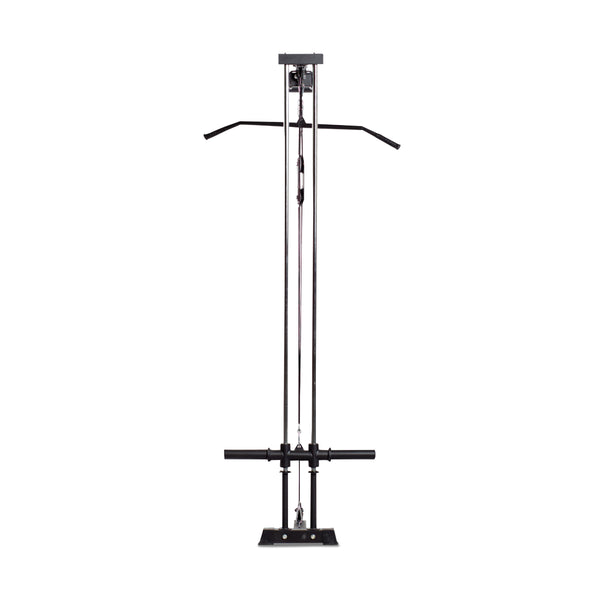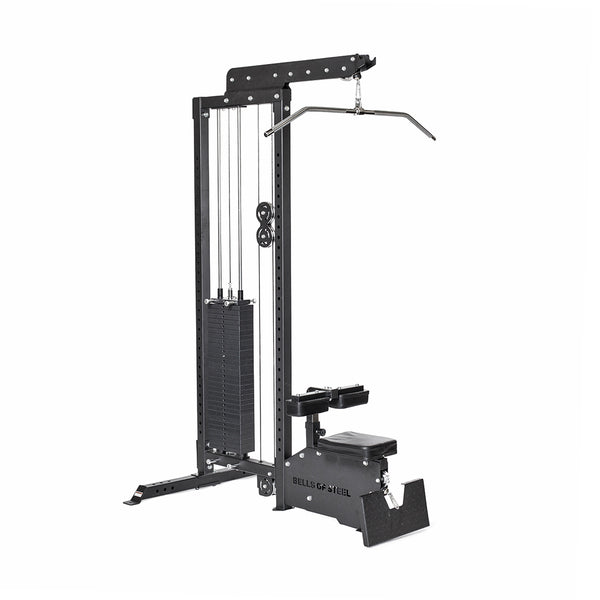If you're a home gym owner looking to improve your pull-up game, you may have come across the question: "Do lat pulldowns help with pull-ups?"
It's a common inquiry among fitness enthusiasts, and the answer is a resounding yes!
Lat pulldowns can be a valuable addition to your workout routine and can indeed assist you in mastering the elusive pull-up—but they’re not the be-all-end-all.
In this article, we'll dive into the world of lat pulldowns and pull-ups, exploring the muscles they target, the key differences between the two exercises, and additional techniques to enhance your pull-up prowess.
Before we delve into the benefits of lat pulldowns for pull-ups, let's first understand the muscles involved in these exercises. Both lat pulldowns and pull-ups predominantly target the latissimus dorsi or the "lats" for short. These are the large muscles located on the sides of your back, responsible for that desirable "V" shape. Engaging your lats is crucial for performing both movements effectively.
However, the lats aren't the only muscles engaged during these exercises. Lat pulldowns also work your biceps, rear deltoids, and various muscles in your upper back. Your hand positioning will also impact which muscles get engaged (neutral grip, wide grip, etc.).
On the other hand, pull-ups engage not only the lats but also the muscles in your arms, shoulders, and core. It's worth noting that pull-ups provide a more compound and functional movement, as you lift your entire body weight against gravity. While both exercises target the same primary muscles, there are notable differences between lat pulldowns and pull-ups. Let's break them down:
- Equipment: Lat pulldowns require a Lat Pulldown machine or Cable Tower with a bench, whereas pull-ups can be performed on a pull-up bar or a sturdy overhead structure.
- Muscle Engagement: Lat pulldowns provide a controlled movement with the weight stack, allowing you to focus on specific muscles. Pull-ups, on the other hand, require overall body strength and coordination.
- Functional Strength: Pull-ups are considered a more functional exercise as they mimic movements used in daily activities, such as lifting yourself over a wall or climbing a rope (hey—we don’t judge your daily activities). Lat pulldowns, while effective for isolating specific muscles, may not directly translate to real-life movements.
- Progression: Lat pulldowns often allow for easier weight adjustments, making it simpler to increase resistance gradually. Pull-ups, however, require you to build strength incrementally, progressing from assisted variations (negatives, banded pull-ups) to unassisted full-range pull-ups.
Despite their similarities, being great at lat pulldowns doesn’t mean you’ll naturally excel at pull-ups and vice versa. While lat pulldowns can be a fantastic complement to your pull-up training, incorporating additional exercises can further improve your pull-up ability.
Here are a few techniques to consider: Negatives involve focusing on the eccentric, or lowering, phase of the pull-up. Jump or use a bench to get your chin above the bar, then lower yourself as slowly as possible. This eccentric contraction helps build strength and control, leading to improved pull-up performance. Resistance bands can provide assistance during pull-ups, reducing the amount of body weight you need to lift.
As you progress, use bands with less tension until you can perform unassisted pull-ups. Inverted rows, performed with a barbell or suspension trainer, engage similar muscles to pull-ups. They help develop back and core strength, contributing to your overall pull-up proficiency. In summary, incorporating lat pulldowns into your home gym routine can indeed help improve your pull-up performance.
By targeting the lats and other muscles involved in pull-ups, lat pulldowns contribute to building strength and muscle memory. However, it's essential to remember that pull-ups offer a more functional and holistic exercise experience, working multiple muscle groups simultaneously.
To enhance your pull-up ability, consider incorporating techniques like negatives, banded pull-ups, assisted pull-up machines, and inverted rows. These exercises will help you build the necessary strength, stability, and coordination to conquer the pull-up bar with confidence.
Remember, progress takes time and consistency, so be patient with yourself as you work towards your pull-up goals. With dedication and smart training, you'll be conquering those pull-ups in no time!




